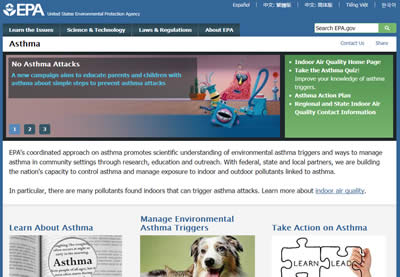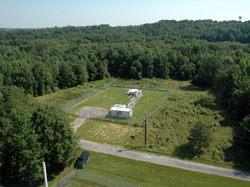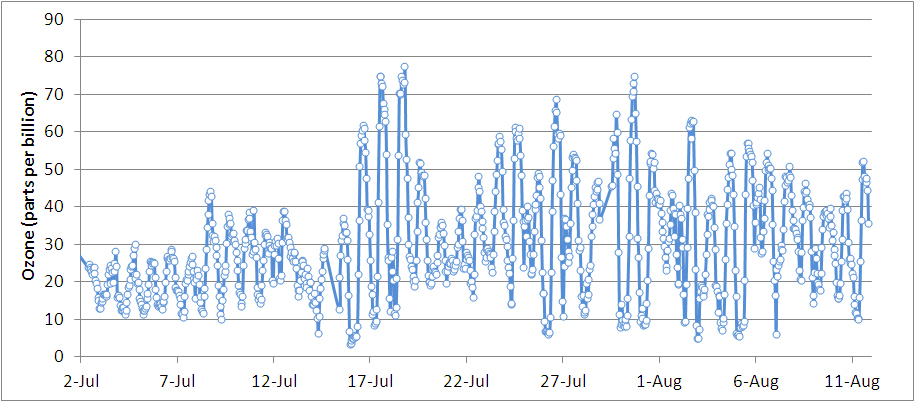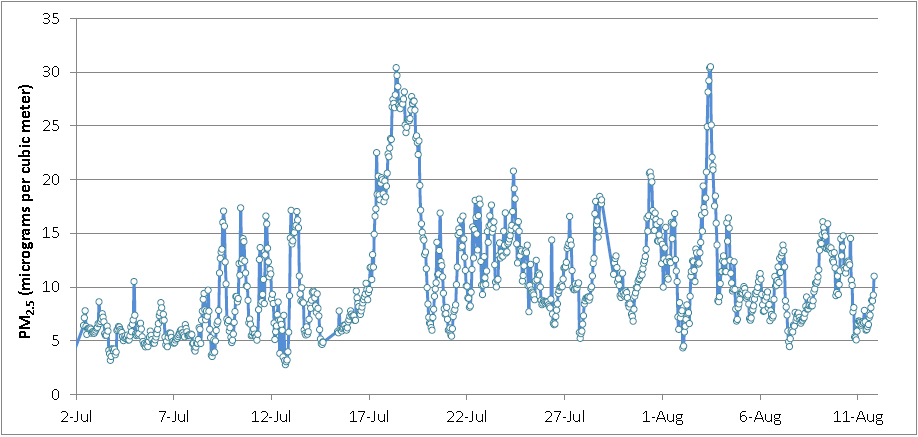Protecting Our Nation’s Treasured Vistas
By Administrator Gina McCarthy
Why do we enjoy exploring our national parks? Nature. Peace. Quiet. Solitude. But at the top of the trail, it’s all about the view. And there’s nothing like being in one of America’s premier national parks to remind me of why I come to work each day. This morning, joined by Interior Secretary Sally Jewell, I hiked to the scenic overlook of the Upper Hawksbill Trail in Shenandoah National Park – just like the millions who visit our national parks and wilderness areas each year in search of gorgeous views.
Our trip to Shenandoah gave us an opportunity to mark progress in the effort to ensure the views in our parks across the country are clear, by reducing haze from regional air pollution.
Haze is caused when tiny pollution particles in the air encounter sunlight, resulting in degraded views of scenic features. This pollution comes from a variety of natural and manmade sources. Natural sources can include windblown dust and soot from wildfires. Manmade sources can include motor vehicles, electric utilities and industrial fuel burning, and manufacturing operations. There is less haze today than years past due to many different Clean Air Act programs, including the Regional Haze Program.
Haze makes it harder to see many of our favorite places, like Half Dome in Yosemite, the Grand Canyon and the valleys and hills of Shenandoah National Park. That’s why the Environmental Protection Agency, the National Park Service, the U.S. Fish and Wildlife Service and the U.S. Forest Service, along with states and tribes, are working together to protect and improve visibility conditions in our most treasured parks and wilderness areas.
The Regional Haze Program has focused on reducing harmful air pollution from large, older facilities, including power plants, cement plants and large industrial boilers. Under this program, if emissions from these sources are found to cause haze at national parks or wilderness areas, then sources must take steps to reduce the pollutants contributing to haze. In addition to improving visibility in our nation’s most treasured natural areas, these steps help protect public health, while supporting local tourism and economic development.
The Regional Haze Program is designed to make improvements over time and is organized into different planning periods, the first of which covers 2008-2018. Since we are near the end of the first planning period, it is a good time to stop and take stock of what we have accomplished, and what more there is to do. In Shenandoah, for example, the average visual range has improved from under 35 miles in 1999 to over 60 miles in 2015. The natural visual range is estimated to be 120 miles at Shenandoah, so there is room for future improvement.
Improvements like this can be seen across the country, In fact, out west, the average visual range has increased – from 90 miles to 120 miles over the same period. While this is good progress, we know there is more to be done. In May 2016, we proposed revisions to the Regional Haze Program, setting the stage for more progress during the next planning period, which is from 2018-2028.
To provide a dynamic way for the public to understand the work we are doing to improve visibility and protect America’s magnificent views and scenic vistas from pollution, check out our interactive story map. Here, you can see the difference between hazy and clear days, learn how many agencies and organizations are working together to improve visibility, and explore an interactive map of protected areas to see web cams and monitoring data.
There’s nothing like climbing hundreds or thousands of feet to make you appreciate something. For me, today was about appreciating the view because of something that isn’t there – haze caused by air pollution.
It was a joy to be in Shenandoah this morning to appreciate the progress we’ve made, while renewing our commitment to keep these views clear for others to enjoy.












